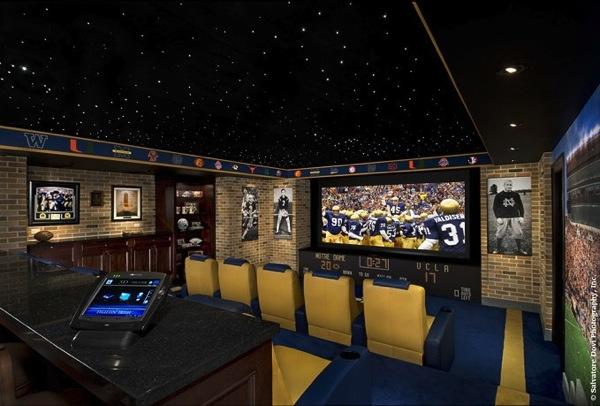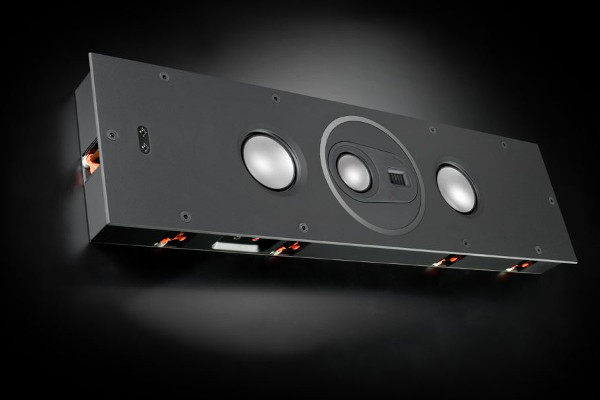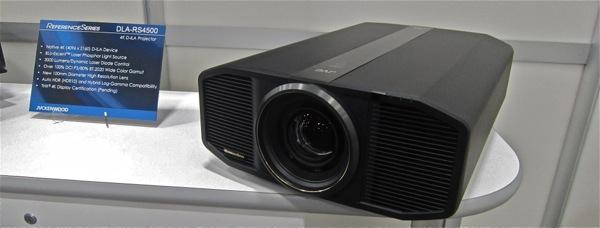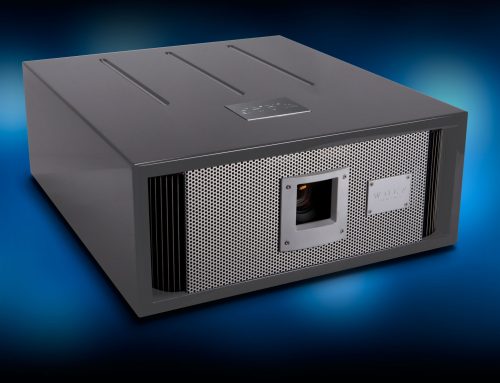CEDIA 2016: Cutting-Edge Projectors Steal the Show

In recent years, however, CEDIA has encompassed more than just the audio and video needs of its customers. To keep up, custom installers must also be adept in such areas as home security and automation. You can’t turn a corner at CEDIA these days without running into a booth flacking whole house vacuum cleaners or door locks accessible through a keypad, iPhone App, or both. There was even a company showing off HD Golf. A shot of a golf course was shown on the screen (presumably of your choice) and you drive a golf ball directly at the flexible screen. It might not be long before Virtual Reality will be added to this! (VR was not, however, a major presence at the show).
But audio and video are our primary focus here at Sound&Vision, and despite the addition of new toys for those who want a home that will instantly obey their every whim, there was more than enough in the sound and picture department to keep us busy for the show’s three-day run.
Speakers Incognito
Audio at the show was a mixed bag of electronics, sources, and speakers. The latter were, as you might expect, heavily weighted toward in-wall and in-ceiling models. While small two-ways and coaxial designs dominated, in-walls are becoming increasingly sophisticated, with many makers showing in-wall adaptations of their bookshelf and floor-standing models. Monitor Audio, for example, showed a off a bewildering, 50+ models of in-wall, on-wall, and outdoor speakers. Of these, the Platinum In-Wall II’s, the company’s flagship ($4995 each), employs much of the technology of the Platinum II box designs, but in this case employing a rotatable midrange and planar tweeter when a horizontal orientation (for a center channel) is required.

At the other end of the price spectrum, Elac will soon (January 2017) be releasing in-wall versions of most of its well-received Debut and Uni-Fi models, plus a couple of unique in-wall/ceiling designs. Pricing will be somewhat higher than the box designs, an oddity driven by the needs of a different distribution channel. Interestingly, Elac also showed a European version of one of their box designs that sells for 50% more than the vinyl-covered model. Proper painting, is appears, is much more expensive to produce than vinyl-wrap veneer.
With a few exceptions, most of the floor-standing and bookshelf speaker designs at the show were on static display. But a row of pre-fab sound rooms lined one wall of the convention center. A few offered static displays only, but three were excellent audio/video demos from GoldenEar, Martin Logan, Phase Tech, SIM2, and RBH, plus an audio-only demo from high end manufacturer MBL.
But such prefab sound rooms have their limitations, particularly in size. More than a few manufacturers built their own “rooms” on the open show floor, so solidly built that even the most aggressive audio/video demos were inaudible outside.
Promising Projectors
While flat screen TVs are a staple at CES, video at CEDIA is 90% projector-centricunsurprising when the point of CEDIA is custom installation. But this also makes CEDIA a showcase for those of us who set up home theaters without expensive professional help. True, most of the projectors on demo were on the pricey side, topping out at the outrageous (and outrageously good) Barco Residential at $350,000too rich for my residence, which in itself cost me less than that. And the screens were immense, often 15 feet or larger.
The only reasonably affordable projector being demonstrated was the Epson Pro Cinema 6040UB at $3,999 (the similar 5040UB, at $2,999, differs only in that it lacks the 6040UB’s spare lamp, cable cover, and extended warranty). It looked very good, but was overshadowed by Epson’s Pro Cinema LS10500. All three models now offer both 4Ke (they accept 4K sources but use pixel shiftingsimilar to the e-shift used by JVC). They also offer HDRthough no projectors we know of can go bright enough to duplicate the HDR offered by the best flat screen sets.
The Epson also employs Laser illumination, as did many of the projectors being demonstrated. Most of them employ Laser Phosphor technology, as contrasted to full RGB Lasers. This isn’t the place to go into detail on the differences, but while both offer long life (far longer than a projection lamp), RGB Lasers are better suited to huge cinema screens. They’re also much pricier. In fact, the only projector we saw at the show that claimed to be using RGB Lasers was the Barco Residential. All the others, including those mentioned here as using Lasers) were using Laser Phosphor illumination.
The Epson LS10500 was the only remotely affordable laser projector on demonstration. But many others were spectacular. Most offer HDR (still limited, as noted above). The best, for me, was the new JVC DLA-RS4500, with a Laser Phosphor light source that JVC has dubbed BLUEscent. While much if its program material, not available commercially, consisted of shots of wildlife without HDR or wide color (though the projector will do both), it looked eye-popping, and supremely natural. A short trailer from Lucy also looked great.

Among the other laser-driven demos, the pricey Barcos in the Barco and Alcons booths looked amazing as well, as did the Digital Cinema Insight 4K Laser ($90,000) in the Harman/JBL Synthesis demo. The latter was probably the best demo at the show when both audio and video are considered. Excerpts from Oblivion, 13 Hours, and Gods of Egypt, on a 16-foot wide, acoustically transparent screen from Screen Innovations, were gripping and intense.
All of the projectors discussed here used either 3-chip DLPs as their imaging devices (Barco, Digital Projection), LCD (Epson 6040UB and 5040UB), LCOQ (Liquid Crystal on Silicon, Epson LS10500) or LCOS (JVC). Last year Texas Instruments introduced a new version of its DLP devices designed to offer a pixel-shifted version of DLP. Roughly similar to the wobulation used in a few rear projection sets years ago, it can display 4 million pixels at once (that’s twice the pixel capability of the imaging devices used by Epson and JVC’s pixel shifters). It takes a 4K input and first displays half the pixels, then shifts a fraction of a pixel, in microseconds, to produce the second half. All of the pixels in each 4K frame are displayed, but displaced in time fast enough that the eye/brain visual system blends them together.
At CEDIA at least two companies showed prototypes of projectors using this technology. SIM2’s Nero4 ($30,000, lamp-driven) is said to be only months from production, and looked outstanding. Digital Projection’s version (price TBD, ) is a bit less far along. It, too, looked very good, apart from blacks that definitely need work. While neither showed serious signs of the rainbow effect (both use just one of the new chips), the material shown was not particularly conducive to revealing this. Apparently a third company, Vivitek, will also offer such a projector, with laser phosphor illumination.

I do have to say that none of the above projectors blew me away when it came to their black levels. More often than not they offered what I’d call “movie theater black.” They rarely looked washed out on most program material, but were clearly medium gray on fades between scenes. The JVC DLA-RS4500 was probably the best, but that was no surprise. The projector that did knock me out in that regard was the Wolf Cinema SDC15 Ultra (pixel-shifter) 4K ($15,000, lamp illuminated, without Wolf’s optional scaler, which runs the cost up to $23,000). The Cinema SDC15's DNA is derived from JVC's top-of-the-line, lamp-lit LCOS projector (not the new, laser-driven DLA-RS4500), and went truly black on fadeouts between scenes in way that no other projector I saw, regardless of price or screen size, could manage.
Altogether, CEDIA 2016 was a great show. With two years in Dallas now behind it, it moves on to San Diego for 2017.
























































